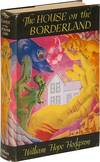

Bloody Ulster; Ballantine's Illustrated History of the Violent Century: Human Conflict No. 5
by Barker, A. J
- Used
- Very Good
- Paperback
- first
- Condition
- Very Good
- Seller
-
Silver Spring, Maryland, United States
Payment Methods Accepted
About This Item
New York, N.Y.: Ballantine Books Inc, 1973. First Printing [Stated]. Trade paperback. Very good. 160 pages. Illustrations. Includes Introduction by Barrie Pitt; The beginning; The Anglo-Irish protests; The Easter rising; Partition; Into war; The 1956 border campaign; The gunmen take over; Bloody Sunday; British initiative; The making and breaking of a truce; and Bibliography. A. J. Barker was a colonel in the British army and graduated from the Royal Military College at Shrivenham. He saw action in World War II in Somaliland, Abyssinia and Burma, the Middle East and Malaya. He retired in 1958 and was the author of several military history books. Through eight centuries of murderous history the "Irish Question" has bedevilled Britain, and the latest chapters are unfolding with the inevitability of Greek tragedy. Ancient hatreds are perpetuated by sectarian killings. Civil war remained a possibility. The most recent "Troubles" was an ethno-nationalist conflict in Northern Ireland during the late 20th century. Also known internationally as the Northern Ireland conflict, it is sometimes described as an "irregular war" or "low-level war". The conflict began in the late 1960s and is usually deemed to have ended with the Good Friday Agreement of 1998. Although the Troubles primarily took place in Northern Ireland, at times the violence spilled over into parts of the Republic of Ireland, England, and mainland Europe. The conflict was primarily political and nationalistic, fuelled by historical events. It also had an ethnic or sectarian dimension, but despite the use of the terms "Protestant" and "Catholic" to refer to the two sides, it was not a religious conflict. A key issue was the constitutional status of Northern Ireland. Unionists, who were mostly Ulster Protestants, wanted Northern Ireland to remain within the United Kingdom. Irish nationalists, who were mostly Irish Catholics, wanted Northern Ireland to leave the United Kingdom and join a united Ireland. The conflict began during a campaign by the Northern Ireland Civil Rights Association to end discrimination against the Catholic/nationalist minority by the Protestant/unionist government of Northern Ireland and Royal Ulster Constabulary (RUC). The authorities attempted to suppress the protest campaign with police brutality; it was also met with violence from loyalists, who believed it was a republican front. Increasing tensions led to severe violence in August 1969 and the deployment of British troops, in what became the British Army's longest ever operation. 'Peace walls' were built in some areas to keep the two communities apart. Some Catholics initially welcomed the British Army as a more neutral force than the RUC, but it soon came to be seen as hostile and biased, particularly after Bloody Sunday in 1972. The main participants in the Troubles were republican paramilitaries such as the Provisional Irish Republican Army (IRA) and the Irish National Liberation Army (INLA); loyalist paramilitaries such as the Ulster Volunteer Force (UVF) and Ulster Defence Association (UDA); British state security forces-the British Army and RUC; and political activists and politicians. The security forces of the Republic of Ireland played a smaller role. Republican paramilitaries carried out a guerrilla campaign against British security forces as well as a bombing campaign against infrastructural, commercial and political targets. Loyalists targeted republicans/nationalists and attacked the wider Catholic community in what they described as retaliation. At times, there were bouts of sectarian tit-for-tat violence, as well as feuds within and between paramilitary groups of the same stripe. The British security forces undertook both a policing and counter-insurgency role, primarily against republicans. There were some incidents of collusion between British security forces and loyalist paramilitaries. The Troubles also involved numerous riots, mass protests and acts of civil disobedience, and led to increased segregation and the creation of no-go areas.
Reviews
(Log in or Create an Account first!)
Details
- Bookseller
- Ground Zero Books
(US)
- Bookseller's Inventory #
- 80392
- Title
- Bloody Ulster; Ballantine's Illustrated History of the Violent Century: Human Conflict No. 5
- Author
- Barker, A. J
- Format/Binding
- Trade paperback
- Book Condition
- Used - Very Good
- Quantity Available
- 1
- Edition
- First Printing [Stated]
- Binding
- Paperback
- Publisher
- Ballantine Books Inc
- Place of Publication
- New York, N.Y.
- Date Published
- 1973
- Keywords
- Anglo-Irish Conflict, Irish Nationalism, Ulster, Easter Rising, Partition, Irish Republican Army, Royal Ulster Constabulary, Ulster Volunteer Force, Ulster Defense Association, Paramilitary, Terrorism
Terms of Sale
Ground Zero Books
Books are offered subject to prior sale. Satisfaction guaranteed. If you notify us within 7 days that you are not satisfied with your purchase, we will refund your purchase price when you return the item in the condition in which it was sold.
About the Seller
Ground Zero Books
Biblio member since 2005
Silver Spring, Maryland
About Ground Zero Books
Founded and operated by trained historians, Ground Zero Books, Ltd., has for over 30 years served scholars, collectors, universities, and all who are interested in military and political history.
Much of our diverse stock is not yet listed on line. If you can't locate the book or other item that you want, please contact us. We may well have it in stock. We welcome your want lists, and encourage you to send them to us.
Much of our diverse stock is not yet listed on line. If you can't locate the book or other item that you want, please contact us. We may well have it in stock. We welcome your want lists, and encourage you to send them to us.
Glossary
Some terminology that may be used in this description includes:
- Trade Paperback
- Used to indicate any paperback book that is larger than a mass-market paperback and is often more similar in size to a hardcover...

